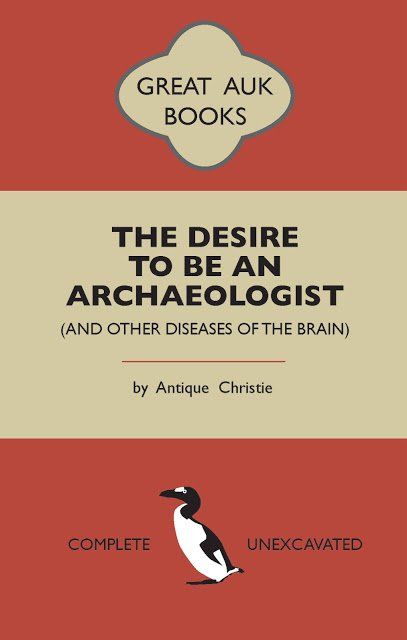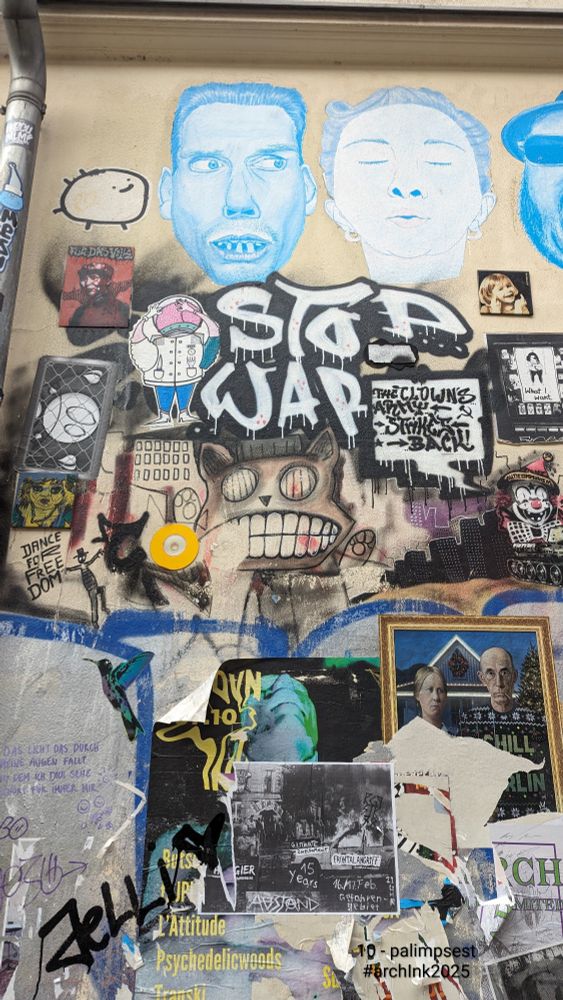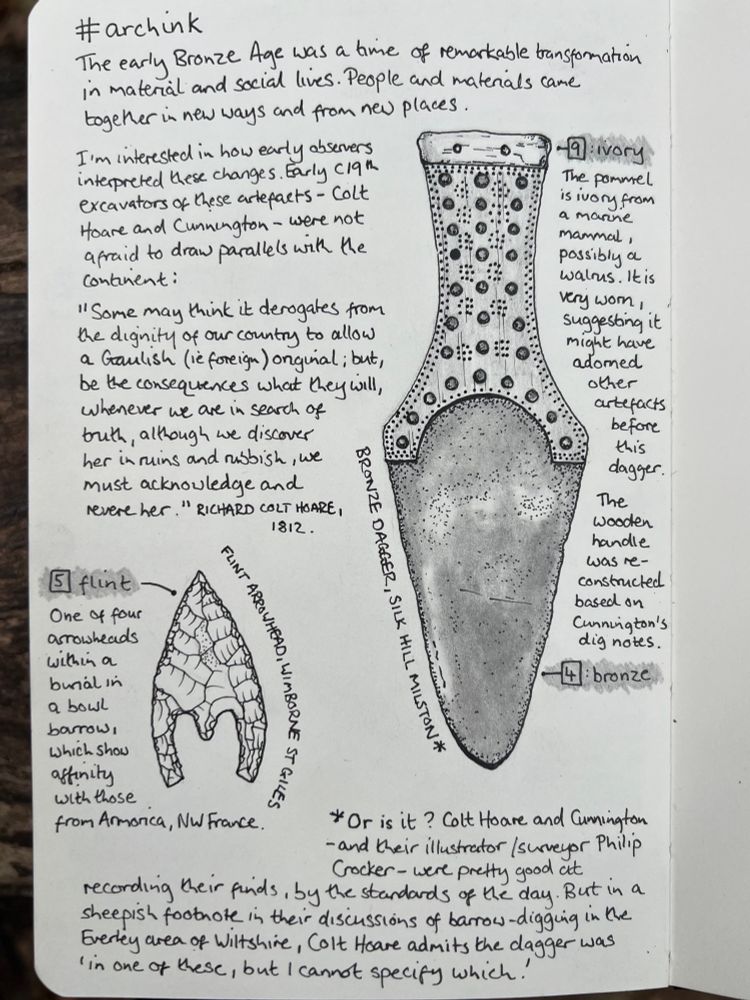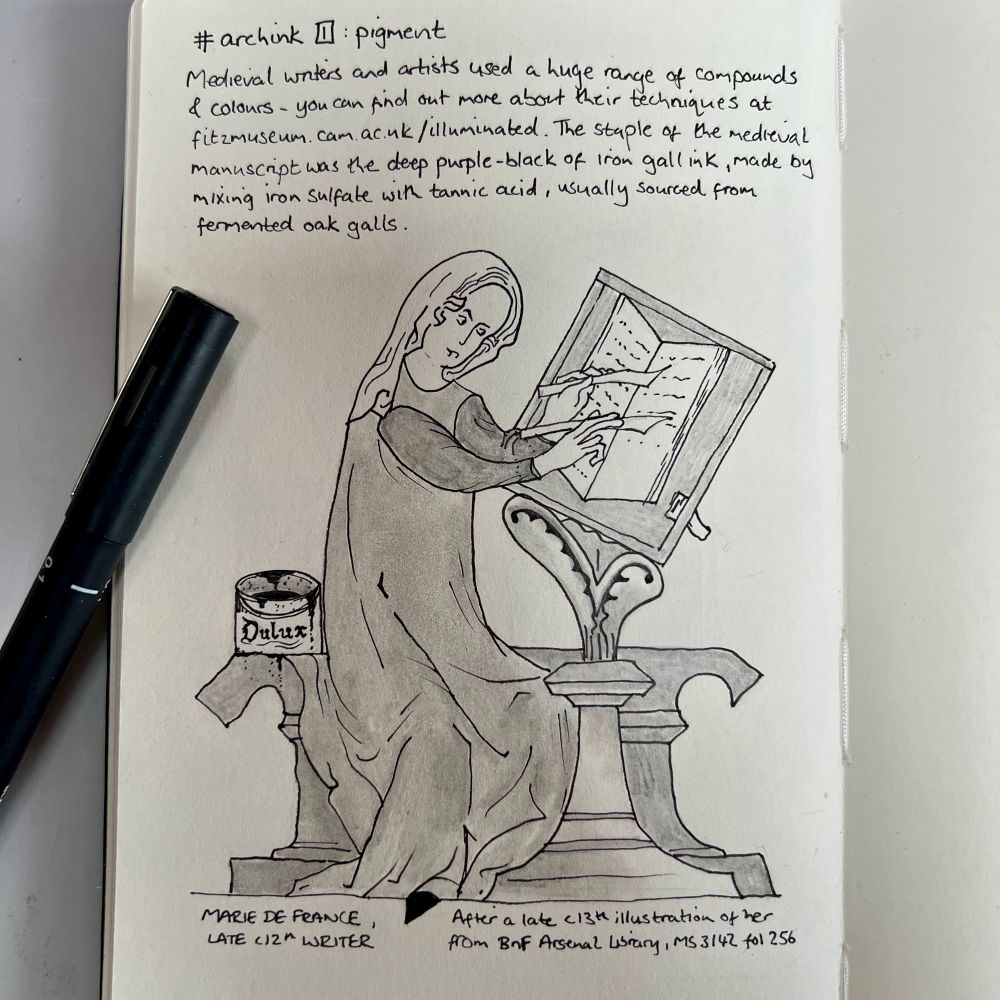
https://jonaschlegel.com/
https://www.archaeoink.com/
Archaeologist, web developer, and founder of archaeoINK
I focus on science communication, engaging visuals and digital tools to make archaeology accessible. Skilled in web solutions, scientific and conceptual illustration
Based in Amsterdam, looking for connections in NL
20% funded thanks to early supporters. Help us reach our goal.
Pledge from €1 or pick a reward. Every contribution matters!
www.kickstarter.com/projects/pas...
@jonaschlegel.com

20% funded thanks to early supporters. Help us reach our goal.
Pledge from €1 or pick a reward. Every contribution matters!
www.kickstarter.com/projects/pas...
@jonaschlegel.com

walls can keep stories in the form of graffiti by unknown graffitists.
layers of paint, posters, and tags overlap, shaping the memory of a place and adding to the stratigraphy of a city.
a living and active palimpsest


walls can keep stories in the form of graffiti by unknown graffitists.
layers of paint, posters, and tags overlap, shaping the memory of a place and adding to the stratigraphy of a city.
a living and active palimpsest
tp948 Celtic Alignment acrylic and oil on paper 17x11 inches £200 unframed. #art #painting #archaeology

tp948 Celtic Alignment acrylic and oil on paper 17x11 inches £200 unframed. #art #painting #archaeology
I found this a strange prompt so I just decided to draw this incredibly archaeologically accurate building of Stonehenge
#ArchInk2025 #Archaeology #Stonehenge

I found this a strange prompt so I just decided to draw this incredibly archaeologically accurate building of Stonehenge
#ArchInk2025 #Archaeology #Stonehenge
Perhaps a practice sketch, or just for the joy of painting 3,500 years ago!
From Deir el-Bahri, Thebes, Egypt, c. 1479–1425 BC. 📷 The Met www.metmuseum.org/art/collecti...
#Archaeology

Perhaps a practice sketch, or just for the joy of painting 3,500 years ago!
From Deir el-Bahri, Thebes, Egypt, c. 1479–1425 BC. 📷 The Met www.metmuseum.org/art/collecti...
#Archaeology
Learn more 🆓 doi.org/10.15184/aqy...
🏺

Learn more 🆓 doi.org/10.15184/aqy...
🏺
#archaeology #illustration 🏺🏛️🗃️
Combining three prompts to look at early-19th century views of early Bronze Age artefacts.

#archaeology #illustration 🏺🏛️🗃️
Combining three prompts to look at early-19th century views of early Bronze Age artefacts.
#archink #archink2025 #inktober
+

#archink #archink2025 #inktober
+


A bit of meditation practices: drawing one curved line after the other.
Cross-section of a tusk, which forms a dense network of intersecting lines known as Schreger lines. They tell growth, material, and history at once.
#archaeology

A bit of meditation practices: drawing one curved line after the other.
Cross-section of a tusk, which forms a dense network of intersecting lines known as Schreger lines. They tell growth, material, and history at once.
#archaeology
#inktober #medievalsky #skystorians 🏺🏛️🗃️
Combining a few prompts to tell the story of Worcester Cathedral’s Cockleshell Pilgrim.

#inktober #medievalsky #skystorians 🏺🏛️🗃️
Combining a few prompts to tell the story of Worcester Cathedral’s Cockleshell Pilgrim.
I reworked an older drawing from when the prompt was “written”. And here the trowel still “writes” the site’s stratigraphy in a way: layer by layer, deposit by deposit and interface by interface.
#archaeology

I reworked an older drawing from when the prompt was “written”. And here the trowel still “writes” the site’s stratigraphy in a way: layer by layer, deposit by deposit and interface by interface.
#archaeology
I received the prints of our #RepresentationMatters publication yesterday evening. It’s not only a collection of papers on the way we reproduce and communicate our knowledge towards audience.

I received the prints of our #RepresentationMatters publication yesterday evening. It’s not only a collection of papers on the way we reproduce and communicate our knowledge towards audience.
#inktober #medievalsky #skystorians 🏺🏛️🗃️
Not sure how much I’ll be able to contribute this year, but I’ll try to chip in when I can.

#inktober #medievalsky #skystorians 🏺🏛️🗃️
Not sure how much I’ll be able to contribute this year, but I’ll try to chip in when I can.
They rarely survive, but their traces do: loom weights, needles, fragments stuck to metal.
This piece looks at those fragments and the ancient depictions of weaving/fabric creation on vessels that still show these practices.
#archInk #archaeology

They rarely survive, but their traces do: loom weights, needles, fragments stuck to metal.
This piece looks at those fragments and the ancient depictions of weaving/fabric creation on vessels that still show these practices.
#archInk #archaeology

A) a ska band
B) the bony part under the keratin sheath on bovids
C) a source of terrible puns and innuendos on an archaeological site
“Horn” #archink #inktober #archink2025

A) a ska band
B) the bony part under the keratin sheath on bovids
C) a source of terrible puns and innuendos on an archaeological site
“Horn” #archink #inktober #archink2025
I did a kind of archaeology journaling page, where I focused on exploring the texture of the horn, noting down functions and anatomy.
#archInk

I did a kind of archaeology journaling page, where I focused on exploring the texture of the horn, noting down functions and anatomy.
#archInk
Just shows also how complex a reconstruction drawing can become.
In Naples.




Just shows also how complex a reconstruction drawing can become.

I created a digital collage of tools used during flint knapping and the by products spreading around the production zone: flakes and blades.
#archaeology #archInk2025

I created a digital collage of tools used during flint knapping and the by products spreading around the production zone: flakes and blades.
#archaeology #archInk2025
Sign up:
forms.gle/qeRcHHe5z3Kf...

Sign up:
forms.gle/qeRcHHe5z3Kf...
i drew them circling between two hands, an acknowledgement of how innovative humans are and bronze meant exchange and shared skill
#archInk #archaeology

i drew them circling between two hands, an acknowledgement of how innovative humans are and bronze meant exchange and shared skill
#archInk #archaeology

